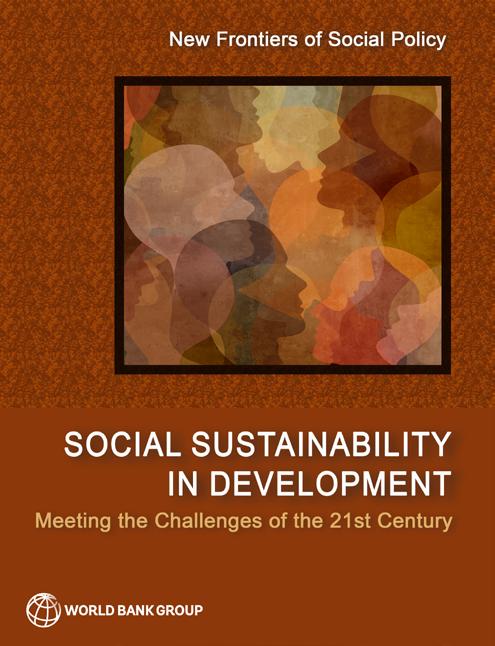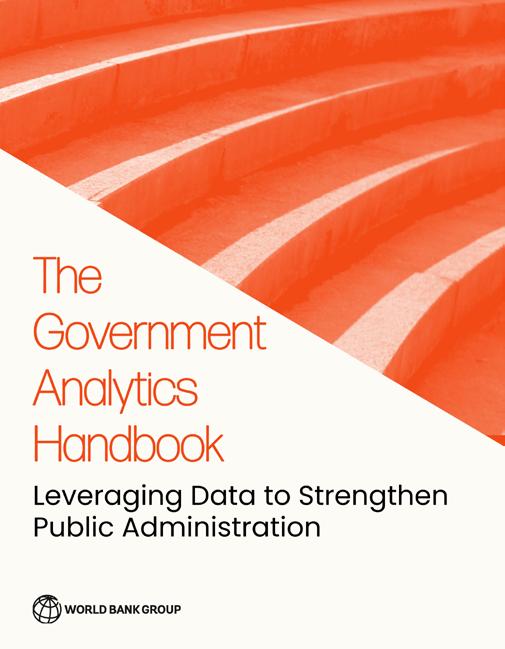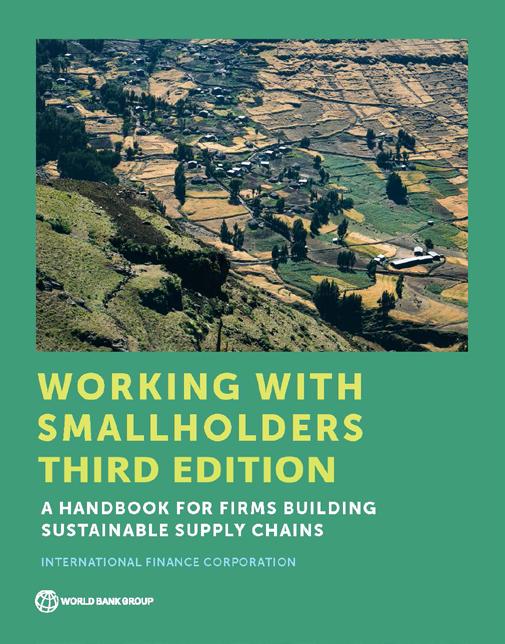
12 minute read
Featured Titles
WOMEN, BUSINESS AND THE LAW 2023
By the World Bank
Advertisement
Women, Business and the Law 2023 is the ninth in a series of annual studies measuring the laws and regulations that affect women's economic opportunity in 190 economies. The project presents eight indicators structured around women's interactions with the law as they move through their careers: Mobility, Workplace, Pay, Marriage, Parenthood, Entrepreneurship, Assets, and Pension. Women, Business and the Law 2023 identifies barriers to women's economic participation and encourages reform of discriminatory laws.
This year, the study also includes research, literature review, and analysis of 52 years of reforms. By examining the economic decisions women make throughout their working lives, as well as tracking regulatory changes from 1970 to today, Women, Business and the Law makes an important contribution to research and policy discussions about the state of women's economic empowerment. The indicators build evidence of the critical relationship between legal gender equality and women's employment and entrepreneurship.
INTERNATIONAL DEBT REPORT 2022
Updated International Debt Statistics
By the World Bank
The International Debt Report (IDR), formerly International Debt Statistics (IDS), is a longstanding annual publication of the World Bank featuring external debt statistics and analysis for the 121 low- and middle-income countries (LMICs) that report to the World Bank Debtor Reporting System. IDR 2022 includes (1) an analyses of external debt stocks and flows from 2010 to 2021 for these countries; (2) an assessment of the evolution of the creditor composition of external debt over the past decade; (3) a focus on how the World Bank has sought to enhance data quality and transparency against the backdrop of rapidly changing global debt dynamics that contribute to debt transparency issues; (4) tables and charts detailing debtor and creditor composition of debt stock and flows, terms volume and terms of new commitments, maturity structure of future debt service payments and debt burdens; and (5) a one-page summary for each country, plus global, regional, and income-group aggregates showing debt stocks and flows, relevant debt indicators, and metadata for 6 years (2010 and 2017–2021). Unique in its coverage of the important trends and issues fundamental to the financing of LMICs, IDR 2022 is an indispensable resource for governments, economists, investors, financial consultants, academics, bankers, and the entire development community.
WOMEN, BUSINESS AND THE LAW 2023
WOMEN, BUSINESS AND THE LAW
March 2023. 120 pages. Stock no. C211944 (ISBN: 978-1-4648-1944-5). US$43.95

INTERNATIONAL DEBT REPORT
January 2023. 204 pages. Stock no. C211902 (ISBN: 978-1-4648-1902-5). US$49.95
THE POLITICAL ECONOMY OF CLIMATE ACTION
By Stephane Hallegatte, Paolo Avner, Ira Dorband, Catrina Godinho, Dirk Heine, Penelope Mealy, and Jun Rentschler

CLIMATE CHANGE AND DEVELOPMENT
April 2023. 120 pages. Stock no. C211953 (ISBN: 978-1-4648-1953-7). US$43.95
Climate change is a defining challenge of our time—and we know how to stop it: stabilize the climate by cutting emissions to net zero by mid-century, while developing pathways to resilient, sustainable development. The world has committed to doing just that, and 139 countries and counting already have net zero targets in place. But commitments are not yet translating into policies and investments at the pace or scale required, because they are often hampered by politics, vested interests, and competing needs.
This report looks at the political economy of the net zero policy, from the common challenges to the development of strategies to overcome them. It shows how governments can improve political economy conditions over time with progressive climate governance interventions, while overcoming more immediate barriers with better policy design and communication. By addressing political economy issues, such as distributional conflicts or ideational opposition, these strategies can unlock progress to increase the feasibility, fairness, and effectiveness of net zero policy—thus turning climate goals into climate action.
NATURE'S FRONTIERS
Achieving Sustainability, Efficiency, and Prosperity with Natural Capital
By Richard Damania, Stephen Polasky, Mary Ruckelshaus, Jason Russ, Markus Amann, Rebecca Chaplin-Kramer, James Gerber, Pete Hawthorne, Martin Heger, Saleh Mamun, Giovanni Ruta, Rafael Schmitt, Jeffrey Smith, Adrian Vogl, Fabian Wagner, and Esha Zaveri

ENVIRONMENT AND SUSTAINABLE DEVELOPMENT
February 2023. 234 pages. Stock no. C211923 (ISBN: 978-1-4648-1923-0). US$49.50
The great expansion of economic activity since the end of the Second World War has raised living standards around the globe, but resulting declines in natural capital like land degradation, air pollution, carbon emissions, and the loss of biodiversity are threatening to reverse much of this progress. Recognizing the essential services provided by natural capital, this report proposes a novel approach to address these foundational challenges of sustainability. By combining innovative science, new data sources, and cutting edge biophysical and economic models, sustainable resource efficiency frontiers are built to assess how countries can sustainably use their natural capital in more efficient ways. The report finds that there are very significant efficiency gaps in nearly every country in the world, and closing these gaps can address many of the world's pressing economic and environmental problems. More efficient use of land could sequester an additional 85.6 billion metric tons of CO2eq, with no adverse economic impacts. Likewise, better management of land, water, and other inputs could increase food production to levels needed to feed the world to 2050—without the loss of biodiversity or greenhouse gas (GHG) storage and sequestration provided by natural habitats. More efficient air pollution policies could prevent an additional 366,000 premature deaths each year, with the same levels of spending. Although achieving these objectives will entail demanding policy reforms, the costs of inaction will be far higher.
FINTECH AND THE FUTURE OF FINANCE
Market and Policy Implications
By Erik Feyen, Harish Natarajan, and Matthew Saal
Fintech—the application of digital technology to financial services—is reshaping the future of finance. Digital technologies are revolutionizing payments, lending, investment, Fintech and the insurance, and other financial products and services—and the COVID-19 pandemic has Future of accelerated this process. Digitalization of financial services and money is helping to Finance bridge gaps in access to financial services for households and firms and is promoting Market and Policy Implications economic development. Improved access to basic financial services translates into Erik Feyen, Harish Natarajan, and Matthew Saal better firm productivity and growth, as well as higher incomes to improve the lives of the poor. Technology can lower transaction costs by maximizing economies of scale and automation; overcoming geographical barriers; increasing the speed, security, and transparency of transactions; and allowing for more tailored financial services that serve consumers, including the poor. Women can especially benefit. Yet too many people and firms still lack access to essential financial services that could help them thrive. It is time for policy makers to embrace fintech opportunities and implement policies that enable and encourage safe financial innovation and adoption. February 2023. 170 pages. Stock no. C211914
(ISBN: 978-1-4648-1914-8). US$43.95
Fintech and the Future of Finance: Market and Policy Implications explores the implications of fintech and the digital transformation of financial services for market outcomes, on the one hand, and regulation and supervision, on the other hand—and how these interact. The report, which provides a high-level perspective for senior policy makers, is accompanied by notes that focus on salient issues for a more technical audience.
MISALLOCATION OF FIRM FINANCING
Evidence and Policies to Close the Finance Productivity Divide
By Tatiana Didier and Ana Paula Cusolito
Access to finance is critical to ensuring productive investments. Yet a myriad of financial distortions, frictions, and market failures can prevent the efficient allocation of financial resources toward the most productive firms and uses and negatively impact aggregate productivity and economic growth. Drawing from a newly constructed dataset of 2.5 million private firms, this report presents novel evidence about the productivity gains that low- and middle-income countries can obtain by removing financial distortions and fostering efficient and inclusive financial markets.

WORLD BANK PRODUCTIVITY PROJECT
March 2023. 120 pages. Stock no. C211939 (ISBN: 978-1-4648-1939-1). US$43.95
SOCIAL SUSTAINABILITY IN DEVELOPMENT
Meeting the Challenges of the 21st Century
By Patrick Barron, Louise Cord, Jose Cuesta, Sabina Espinoza, Greg Larson, and Michael Woolcock

NEW FRONTIERS OF SOCIAL POLICY
February 2023. 110 pages. Stock no. C211946 (ISBN: 978-1-4648-1946-9). US$43.95
All development is about people: the transformative process to equip, link, and enable groups of people to drive change and create something new to benefit society. When sustained over time, it can promote societies where all people can thrive; but the change process, particularly its social aspects, can be complex, challenging, and even contentious.
The current moment underscores that continued progress toward sustainable development is not guaranteed. More than two decades into the 21st century, a perfect storm has gathered force: the overlapping crises of COVID-19, climate change, rising levels of conflict, and a global economic slowdown are enflaming long-standing challenges—exacerbating inequality, persistent structural barriers, and deep-rooted systemic inequities. Addressing these challenges will require social sustainability, in addition to economic and environmental sustainability. Despite growing recognition of its importance, however, there is less clarity over what social sustainability is and how it can best be pursued. This book seeks to move the agenda forward, advancing the concept of social sustainability and sharpening the analytical foundations on which it rests.
COMMODITY MARKETS
Evolution, Challenges, and Policies
Edited by John Baffes and Peter Nagle
December 2022. 292 pages. Stock no. C211911 (ISBN: 978-1-4648-1911-7). US$54.95
Commodity markets are integral to the global economy. Understanding what drives developments of these markets is critical to the design of policy frameworks that facilitate the economic objectives of sustainable growth, inflation stability, poverty reduction, food security, and the mitigation of climate change. This study is the first comprehensive analysis examining market and policy developments for all commodity groups, including energy, metals, and agriculture, over the past century. It finds that, while the quantity of commodities consumed has risen enormously, driven by population and income growth, the relative importance of commodities has shifted over time, as technological innovation created new uses for some materials and facilitated substitution among commodities. The study also shows that commodity markets are heterogeneous in terms of their drivers, price behavior, and macroeconomic impact on emerging markets and developing economies, and that the relationship between economic growth and commodity demand varies widely across countries, depending on their stage of economic development. Policy frameworks that enable countercyclical macroeconomic responses have become increasingly common—and beneficial. Other policy tools have had mixed outcomes.
THE GOVERNMENT ANALYTICS HANDBOOK
Edited by Daniel Rogger and Christian Schuster
The Government Analytics Handbook presents frontier evidence and practitioner insights on how to leverage data to strengthen public administration. The handbook covers the use of administrative data, public servant surveys, and other microdata to diagnose and improve how public organizations work. Overview chapters lay out the motivation for government analytics, summarize key lessons from the book on how to do government analytics well, and offer an approach for the future of government data. Four online modules are included to provide in-depth guidance on key themes: Module 1: Foundational Themes in Government Analytics Module 2: Government Analytics Using Administrative Data Module 3: Government Analytics Using Public Servant Surveys Module 4: Government Analytics Using External Assessments The Government Analytics Handbook includes tools and resources for undertaking recommended analytics, enabling readers to immediately apply insights from the handbook.

June 2023. 100 pages plus four online modules Stock no. C211957 (ISBN: 978-1-4648-1957-5). US$43.95
WORKING WITH SMALLHOLDERS
A Handbook for Firms Building Sustainable Supply Chains, Third Edition
By International Finance Corporation
The Working with Smallholders handbook aims to enable the development of more sustainable, resilient, and productive agribusiness supply chains and to illustrate their developmental impact. Smallholder farmers present both opportunities and challenge for agribusinesses. The predominance of smallholders in many frontier and emerging markets makes them an integral part of agribusiness supply chains. This handbook compiles innovative solutions to these challenges, incorporating case studies from across diverse regions and agribusiness sectors. The third edition incorporates new developments and areas of interest since the last publication, including the growing predominance of digital technologies and increasing concerns around sustainability.

April 2023. 324 pages. Stock no. C211962 (ISBN: 978-1-4648-1962-9). US$54.95
SILVER OPPORTUNITY
Building Integrated Services for Older Adults around Primary Health Care
Edited by Xiaohui Hou, Jigyasa Sharma, and Feng Zhao

April 2023. 250 pages. Stock no. C211958 (ISBN: 978-1-4648-1958-2). US$49.95
We live in a rapidly aging world, in which people who are 60 years and older outnumber children under the age of five. This book reveals large and growing gaps in care for older adults in countries at all income levels and shows how to leverage reforms for improving health outcomes for older adults and creating healthier, more prosperous communities. Aimed at policy makers and other health and development stakeholders who want to promote healthier aging, Silver Opportunity compiles the latest evidence on care needs and gaps for aging populations. It argues that primary health care (PHC) should be the cornerstone of integrated service delivery for older people, but that PHC systems must first build their capacity to respond to older people's health needs. It presents an original framework for policy action to advance PHC-centered, integrated senior care; documents the experiences of pioneering countries in delivering community-based care to older people; and provides recommendations for decision-makers. The framework presents four policy levers to improve health care for seniors—financing, innovation, regulation, and evaluation and measurement—or FIRE. Finally, the book posits that by acting now, countries can leverage population aging to accelerate progress toward health equity and Universal Health Coverage (UHC).
PRIVATE CITIES
By Yue Li and Martin Rama
URBAN DEVELOPMENT
April 2023. 264 pages. Stock no. C211833 (ISBN: 978-1-4648-1833-2). US$49.50
Institutional constraints and weak capacity often hamper the ability of local governments in developing countries to steer urbanization. As a result, there are not enough cities to accommodate an unabated rural-urban migration, and many of the cities that emerge are sprawling and disconnected. The flipside is the emergence of entire cities—more than gated communities or industrial parks—led in whole or in part by private actors. To date, little systematic research has been conducted on the conditions that are necessary for such unusual entities to emerge, on the roles played by private actors, or on the consequences for efficiency and equity. Private Cities: Outstanding Examples from Developing Countries and Their Implications for Urban Policy aims to fill this gap. Using an analytical framework that draws on urban economics and political science, it includes inventories of private cities in the Arab Republic of Egypt, India, Indonesia, and Pakistan and provides structured reviews of 14 outstanding examples across all developing regions.





